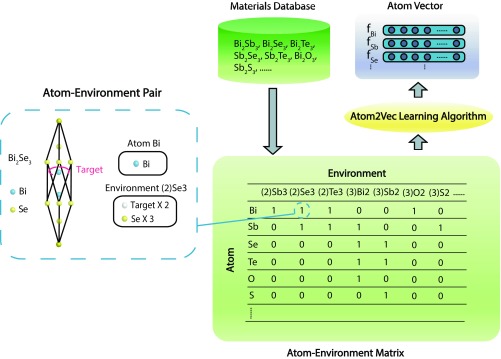Fig. 1.
Atom2Vec workflow to learn atoms from the materials database. Atom–environment pairs are generated for every compound in the materials database, based on which atom–environment matrix is constructed. A small dataset of seven compounds is used here as an example. Entries of the atom–environment matrix denote the numbers of atom–environment pairs. Inset shows the unit cell of compound and the pair corresponding to the entry of target atom and environment . Only compositional information is considered, while structural information is ignored. Atom2Vec learning algorithms extract knowledge of atoms from the atom–environment matrix and encode learned properties in atom vectors.

